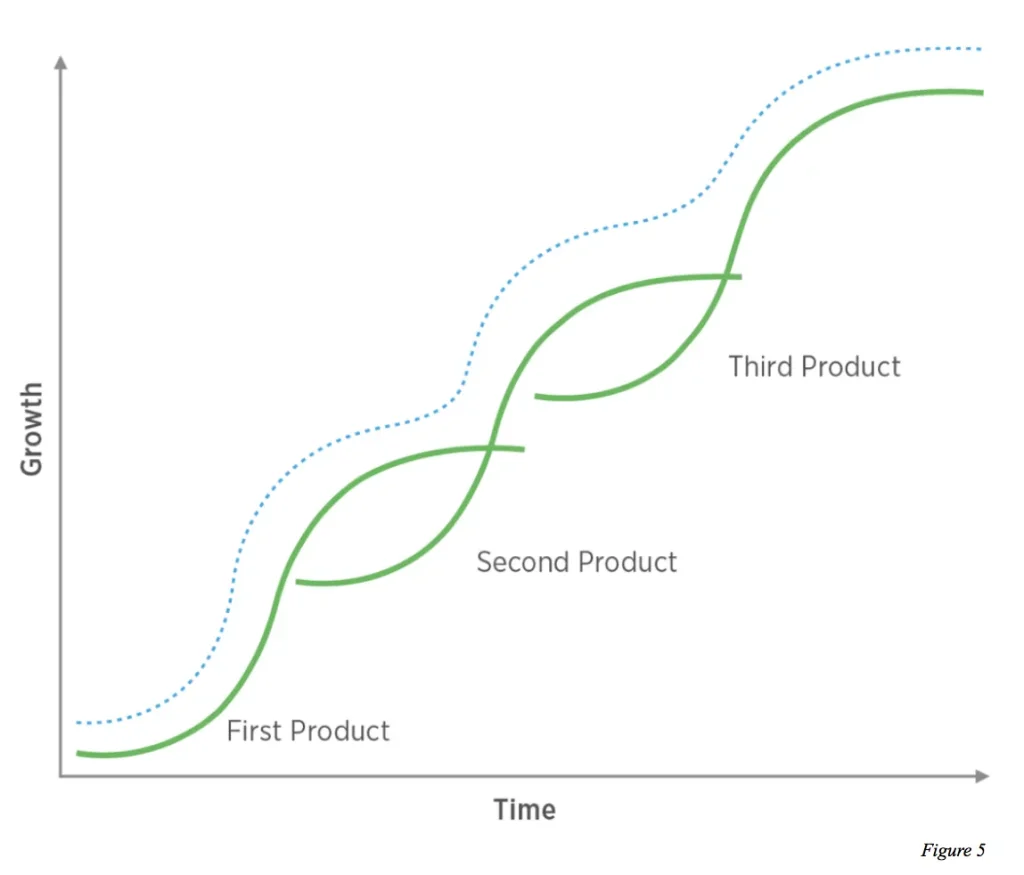Product Growth Journey: From Introduction to Maturity

Every successful product matures or grows up through defined and multiple stages using the S-curve. The journey shows the levels of growth, user engagement, or market penetration varying at different times. Let’s now go deeper into these phases of product growth.
Early Stage: Getting Your First Fans

The first goal you may have when launching a new product is to find a small but loyal base of users that really love what you’ve made. Initially, this will be quite low in number, and the gathered data won’t be very informative about the future of the product. What mainly happens in this stage is the testing of hypotheses to actually find out if the product can satisfy your vision and user needs.
During the first month, a lot of people will try the product out of curiosity, but only a few will stick around. Over time, you’ll see this balance between new users, those who leave (churn), and those who come back (resurrection), hence an indication of your product’s potential.
Growth Phase: Accelerating Toward Product-Market Fit

While a product becomes established, it enters its Growth stage. This is the phase during which there will be a substantial increase in user numbers upon the realization of product-market fit. The effort will basically be directed at growing your user base and perfecting the product to be more precisely helpful to a bigger group of users.
Through this process, retention should have begun to improve, with retained users increasingly driving growth; although new users are still an important part of the total. Success in engagement will have begun to be felt by very positive trends to demonstrate that users think the product is worthwhile.
Hyper Growth Phase: The Exponential Leap

The Hyper Growth phase is where all the magic happens for products that truly take off. It is a rapid, exponential scaling and gaining meaningful word-of-mouth recognition stage for your product. In this phase, older user cohorts exhibit better retention, and the number of resurrected users outweighs the number of churned users.
The maturity phase can be the most exciting time for a product because it often represents the peak of a product’s growth potential. At this point, all engagement signals that would basically matter are usually very strong, proving that your product has a solid ground in the market.
Mature Stage: Maintaining Success
The product typically moves into the Mature stage following the Hyper Growth wave. By this time, the market has largely reached saturation and growth begins to slow down. With the passage of time, the balance of churn and resurrection smooths out, causing the product to enter the flat part of the curve, which is when relatively few new users come in compared to the already retained ones. After this point, the only way to grow is by diversifying your products. If you want to sustain growth, enter into new markets or develop new products. It is absolutely necessary for long-term success, simply because it enables you to realize further growth opportunities after your lead product has matured.
Increasing Product Lines: The Key to Sustained Growth

As your product gets into the growth stage, the next step is already ticking over. The diversification into other products and markets may let you continue growing. Much like Netflix diversified its businesses internationally as the U.S. growth matured, your company must consider overlapped S-curves to continue succeeding.
Conclusion
It is important to have an understanding of the stages in product growth in order to temper expectations and be able to better gauge the future. At every single stage, there are challenges and numerous opportunities that expose themselves. Therefore, you will be more enabled to make guiding decisions that take you closer to success by looking at these different stages.
Leave a Reply